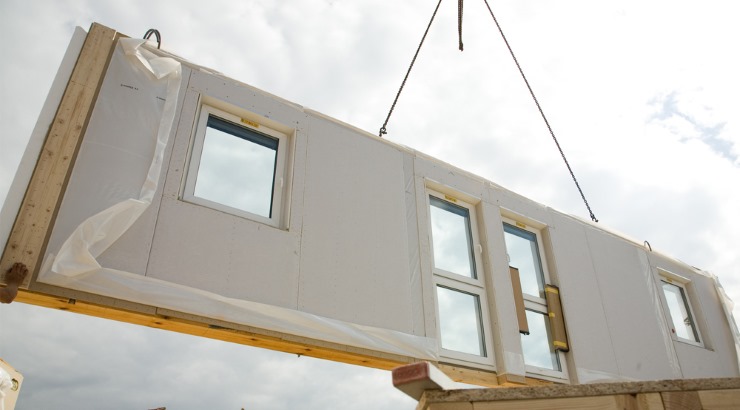Innovation
7 Building Technologies That Can Save You Money
Builders are adopting smart building technology to cut costs.

As the demand for affordable housing continues to rise, builders are increasingly embracing various types of smart building technology as a means to cut construction costs.
From precast flat panel modules to hybrid concrete buildings, and pre-cast foundation techniques, there are popular types of alternative building technology available today.
1.) Insulating concrete formwork (ICF) technique
Insulating concrete formwork (ICF) is a construction technique that utilises lightweight and hollow insulation forms that fit together like giant Lego pieces to create a wall framework.
The structure is then filled with high-quality concrete, which cures inside the ICFs to become a high-strength structure with remarkable sound and thermal insulation.
ICF structures offer huge savings in terms of construction timelines and labour, as well as the reduced need for skilled workers. They can be installed in wet conditions enabling early waterproofing of houses.
2.) Precast foundation technique
The precast concrete technique is an off-site building method in which foundations are pre-engineered and manufactured in a factory before being shipped to a site for installation.
As one of the most popular types of building technology, precast concrete construction allows construction to progress even in bad weather, thereby cutting project timelines while reducing site disruptions and the overall cost of construction.
RELATED: World’s Top 10 Precast Concrete Companies
3.) 3D volumetric technology
3D volumetric technology is a modular construction technique in which 3D units are created in a controlled factory environment using the required building and construction materials.
Once ready and when needed, finished 3D units are delivered to the site in various components – either as simple structural blocks or refined units with all the niceties – for swift assemblage.
4.) Thin joint masonry technique
Thin joint construction is a building technology that replaces the conventional 10mm cement mortar joints with 3mm joints that use adhesive mortar.
‘Gluing’ blocks together enhances productivity while cutting the construction timelines. It also helps to minimise material wastage – which results in significant cost reduction.
Besides, the curing of mortar takes place quickly without weakening bonding strength, resulting in the elimination of the floating problem. This technique accounts for up to 90% of masonry work in Europe.
5.) Flat slab technology
Flat slab technology utilises flat slabs (reinforced concrete slabs held directly by concrete columns without the use of beams) to facilitate easy and quick insertion of horizontal features and for partitioning of buildings.
It is ideal for most construction projects and asymmetrical column layouts such as floors with curved shapes and ramps.
The flat slab technique is easily one of the quickest construction methods available. Besides, it helps to significantly cut down labour costs by reducing reinforcement requirements.
6.) Hybrid concrete construction
Hybrid concrete construction combines precast concrete and cast in-situ concrete to create taller and larger building structures – taking advantage of the strength and inherent qualities of the two products.
This technique offers great value to the builder in terms of increased off-site component manufacture, safe and faster construction and consistent performance.
Quite often, hybrid concrete systems are manufactured in a controlled factory setting. This speeds up the construction process and allows for easy installation of the structure on site.
7.) Precast flat panel modules
Precast flat panel modules are walls and floor components produced by casting concrete in a reusable mould or “form” that is cured in a factory and then transported to the actual construction site for installation.
RELATED: The A to Z of Modular Construction
The technology which is also known as cross-wall construction is becoming very popular among many builders due to its seamless adherence to building specifications, ease of installation as well as swiftness of construction.
In recent years, expanded polystyrene has been used as the cores to precast wall panels to produce lightweight structures that offer better thermal insulation.














